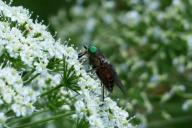If you want to be a successful gardener, then you need to know about rootstocks and how to use them beneficially.
A rootstock is the lower part of a plant, usually a woody stem or root, onto which another plant, called the scion or graft, is attached.
This combination creates what's known as a grafted plant. Using this part can benefit you in a few ways.
Disease Resistance
Some rootstocks have natural resistance to specific diseases, such as soil-borne pathogens or pests.
By grafting a desirable scion onto a disease-resistant rootstock, you can protect your plant from getting sick.

For example, using a resistant rootstock for apple trees can prevent common diseases like apple scab.
Size Control
Rootstocks can influence the size of the mature plant.
If you have limited space or want to make harvesting easier, you can choose a rootstock that naturally restricts the plant's growth.
This is particularly useful for fruit trees like apples or pears.
Soil Adaptation
Some rootstocks are better suited to specific soil conditions.
If your garden soil is sandy, clayey, or has other characteristics, selecting a rootstock that thrives in those conditions can help your plant grow more successfully.
Hardiness
Rootstocks can provide cold-hardiness to plants in regions with harsh winters.
They can help your plants survive low temperatures and potentially extend the range of plants you can grow in your garden.
Faster Growth
Certain rootstocks promote more vigorous growth in the scion. This can lead to quicker fruit production or larger yields.
For example, using a vigorous rootstock with grapevines can result in faster grape production.
Conclusion
Grafting and selecting the right rootstock are common practices in gardening and horticulture.
It allows gardeners to harness the strengths of both the rootstock and the scion, resulting in healthier, more adaptable, and productive plants in various garden settings.









